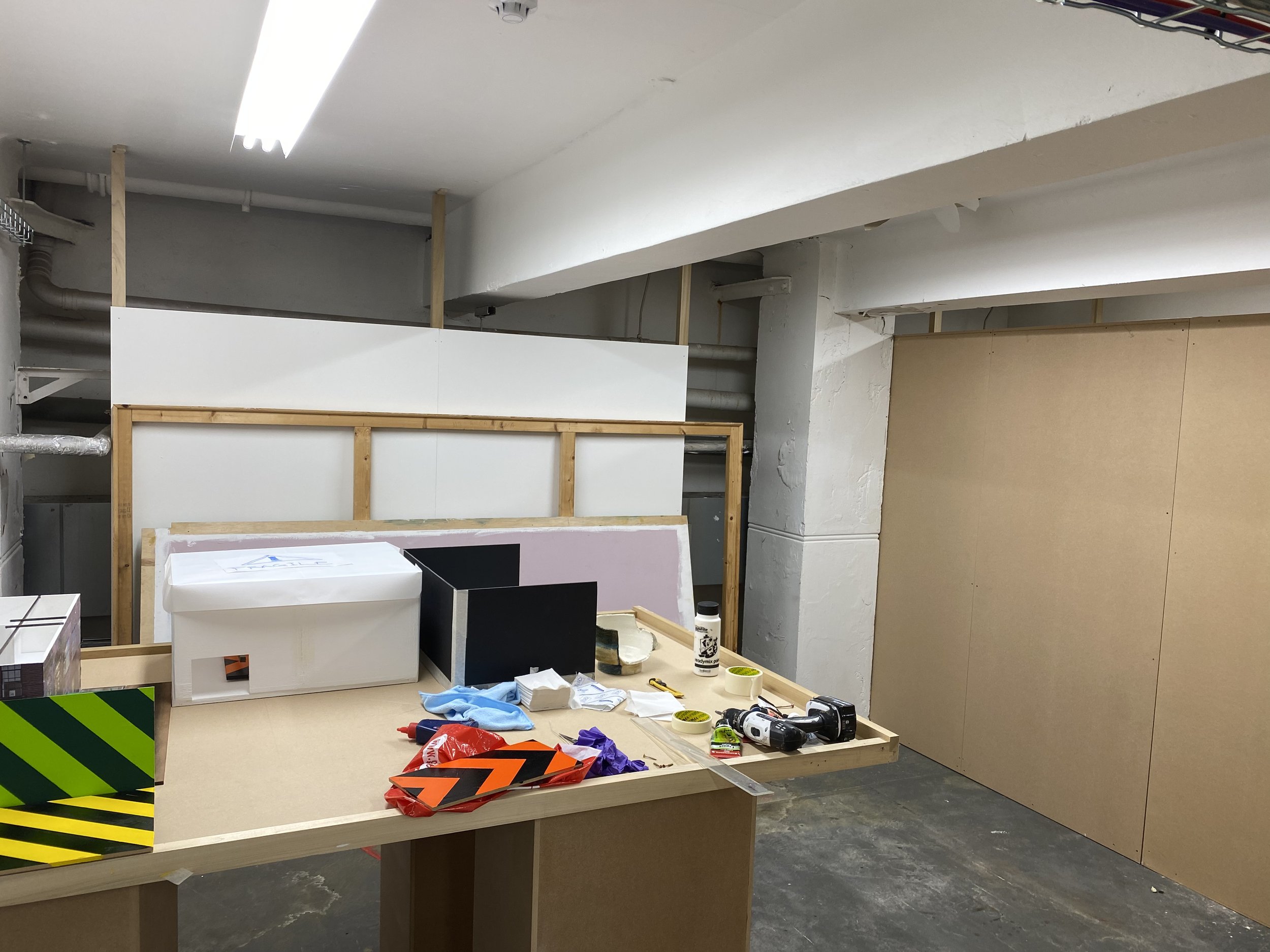Arrested development
One of the developmental processes I am engaged with is moving image. I am finding I can utilize a very different authorship of production. What is critical is that the end product usually starts way earlier in a different environment. By this I am highlighting the diaristic nature of my film work. My process is dependent on the moment of arrest in any given time, space or experience. This usually occurs when I find my thinking ‘broken into’ by the world around me. This could be due to anything like a glint of light from a pane of glass hitting my eye, to a strange shadow, or - how i now interpret these occurrences - any “accidental property” [1]
In conjunction with my research into the space between object and form and the agency to seek further understanding of our world, present in any tensions between these two positions, I am always looking to extract any ‘potential’ from the object form or the representations found in resultant forms of that same object. Earlier I mentioned authorship. Therefore, as with this experiment of film, I see the space that houses the work as the page and or canvas. What is crucial to note is that the images almost irrelevant, because first consideration should be given to the marriage between light and how the room embraces its effects.
My method for this endeavor has been to create a dark room. I found lots of sheets of MDF wood left over (almost abandoned) in the basement, so have decided to put it to use. See fig 1 & 2. I have created a scaled up version of an idea that started developing as a maquette (see previous post ‘She’s a Model’)
Fig. 1, The start of what became a test space to try works within ‘space’.
Fig. 2, Construction of the ‘room’.
A few weeks ago we had our first crit. The space for me, was as much a part of the work as the piece on display, which was conceptual piece, a ‘concrete lampshade’. See fig. 3. As well as dealing with materiality, Concrete Lampshade interacts with space. The suspension is a gravitational counter that separates the floor and ceiling. The wires connect and hold the ceiling in place. The work draws you into its solidity leaving the viewer complicit in its defiance of the laws of nature that want it pulled back to the ground, the terre, the corporeal that re-integrates matter with matter.
Fig. 3, Concrete Lampshade. Work in progress hanging for a crit.
This “mattering,” [2] as Karen Barad terms it, deals with thinking - not through the material, but from within the agency afforded to our own physical interconnectedness with this piece. As a heavy object, the work, for me, indexes the weight of existence, the fact that the support wires are taught amplifies the sheer density of the sculpture as it silently suspends itself. This hanging stands in for a confrontation without words. There is an element of danger in the way the wire seems to just be able to cope with the weight. The work embodies the fraught tension enacted by the cable and amplifies that anxious state into the ceramic work underneath. I wanted to see if there was a way I could find to represent the tension within the space between what was hanging and what was positioned underneath. See fig. 4.
Fig. 4, A broken ceramic sculpture sits underneath Concrete Lampshade.
Adding a sculpture underneath a sculpture, is part of my method to experiment. Whether the two works combine aesthetically is secondary to my process of research through making. I am just as interested in finding out what doesn’t work as to finding out what does. I feel the latter robs the making process of revealing a deeper essentialism. It is this investigation into the withdrawn, or what I now identify through my CCS as ‘latency’, ( a word I want to claim) I am trying to create a narrative that uses the object as a way of opening up that with would otherwise go unnoticed. Something that may not have been discovered if the work was only put together using presupposed ideas, sketches and formulaic ‘dressing’ of the space. I can also concede to the possibility that upon saying that, maybe ontologically, that is exactly what I have done.
Part of what I am doing is making a point that theorizing is a matter of already engaging as part of the world (not even with the world). Crucially, when I speak about ontology, I don't mean an already given there-ness, but on the contrary, an ongoing re-opening. Put differently, it is not just the fact that ontology is neither a given nor fixed, but that "it" is radically open (in an undoing of "it" in its alleged is-ness).
The above quote from Karen Barad exemplifies the ontological approach to my making as research. The transitory implication given by Barad in regards to the non-determinacy of an open ontology, is the critical engagement my work utilizes. As important as the theorizing is, one of the key elements my work embodies is the need to not really reside in any one place in a final way. In other words, the openness of the application to making leaves just as much to be questioned as opposed to answering something to definitely and exact.
[1] Robertson Ishii, Teresa and Philip Atkins, "Essential vs. Accidental Properties", The Stanford Encyclopedia of Philosophy (Winter 2020 Edition), Edward N. Zalta (ed.), URL = <https://plato.stanford.edu/archives/win2020/entries/essential-accidental/>.
[2] Karen Barad, Daniela Gandorfer ‘Political Desirings: Yearnings for Mattering Differently’, Theory & Event, Volume 24, Number 1, January 2021 pp. 14-66



